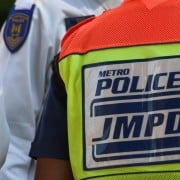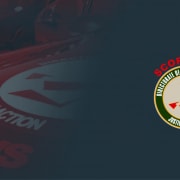|
Getting your Trinity Audio player ready...
|
By Zanele Fengu
The minibus taxi industry has been stuck – almost to the enjoyment of some in its community – with the label of being a “law upon itself”, breaking all the rules when challenging government policies that pinch them a little harder than other road users.
Whether it’s the peaceful, yet disruptive blocking of national highways with hundreds of taxis at a time, or the threatening utterances to interrupt economic activity in major cities of the country, they’re often perceived to get what they want, mainly because politicians have some idea of the power they yield in the said economy: transporting millions daily.
To their notorious club of “street power” mongers they can now welcome the driving school sector. If events of the past few weeks since the official introduction of the Natis system in February are anything to go by, the capture of the licensing sector is far from being corrected.
Transport Minister Fikile Mbalula recently called out driving school practitioners protesting over the system – aimed at modernising the process of licensing transactions – for their disruptive, irrational behaviour in repudiation of it. Describing their actions as a display of “anarchy” and “lawlessness”, he declared during a visit to one of Pretoria’s licensing centres that the only reason driving school owners were up in arms over the new booking system was that it would take away the opportunity of “block booking”, a practice through which they get to make a lot of revenue through multiple bookings of clients at a go. Block booking causes huge inconvenience to individual applicants, but has been going on for years without much effort to stop it.
Despite the minister’s angry reaction – claiming that some protesters brandished dangerous weapons including illegal AK47s, and vowing that his department would not succumb to the intimidation – what followed was a reneging of authority on the part of the Road Traffic Management Corporation (RTMC), the custodian of Natis and the licensing function of the department as a whole. Responding to the protests, the corporation backtracked on some of the requirements of the new Natis system, and relaxed some of the security regulations that sparked the protests in the first place.
This bending over backwards may be a diplomatic move aimed at quelling a potential crisis, but it aids in hiding a culture of entitlement in the capture of a sector riddled with corruption that knows no bounds.
Driving schools as the corrupt middle-man
For many years the Department of Transport’s driving license testing centres (DLTCs) across the country have been dogged by the stigma of rampant corruption, due to its marked failure to respond effectively. The reality on the ground is that only a small number of DLTCs can claim to be free of corruption, with the majority that enable it becoming increasingly popular for reasons later discussed in this article.
The process of obtaining a driving license in South Africa is well-documented. An expensive exercise for many, given the socio-economic conditions of the country’s majority, but one that is very necessary, particularly for a stronger chance of entry into the job market. Many South Africans rely on driving schools to facilitate the booking process with the DLTCs.
In fact, some driving schools market their package offering as ensuring a “first time guaranteed pass”, leading clients to assume that their teaching methods are so top-notch that even a terrible driver could be transformed into a good one, but in reality meaning something more sinister: that the facilitation goes beyond filing documents, and could include greasing the hands of officials on whose mercy candidates rely. It has become common practice amongst driving schools to collude with corrupt officials at DLTCs then use this relationship to ensure a pass on the first try for their clients. The greasing does not end at the booking phase, as many in the public can attest.
Candidates who pay a bribe through their driving school to a corrupt DLTC official can secure some “assistance” on their learner’s test. This is achieved by the official strategically seating them in an inconspicuous spot in the testing room, where they cannot draw public attention when scanning the applicant’s test prior to submitting, to ensure the correctness of their answers. Once the official is satisfied, the candidate is then instructed to submit and thereafter issued with their learner’s license. In the next phase of this now-established corrupt relationship, the driving test, the testing official may ignore faults, comfortable in their knowledge that the bribe has already been secured, again with the facilitation of the driving school official. In fact, to help disguise the true nature of the corruption in place, instructors propose a larger fee than that advertised in their packages, for candidates who wish to have a wholly smooth experience. In the “inclusive” package, the bribes intended for each of the testing phases are secured.
Some driving schools have the bribe already included in their price, thus easing the learner’s conscience and making this package more attractive to a candidate ambivalent to engaging in corrupt activity. Throughout the process, the candidate never interacts with the DLTC official directly where bribes are paid, making this a “cleaner” method for securing one’s license.
Vulnerabilities in the system
The driving test is notorious for its difficulty, even amongst experienced drivers. This begs the question whether its unreasonably high standard constitutes a corruption vulnerability in and of itself.
The financial cost attached to the testing experience is also a factor: imagine a typical young graduate from a disadvantaged community wishing to secure a license to up their chances of competing in the labour market. They are haunted by looming student loan repayments, but also need to secure work in order to support their family. The prospect of doing and re-doing the different phases of acquiring a driver’s license may very well be daunting. The process is time-consuming, stressful and tiring; many people, out of a lack of desire to put up with these inconveniences, opt to just pay the bribes instead.
The cost of DTLC corruption
But beyond the personal impact of DLTC corruption, the economic burden of its manifestation in the driving school sector is great and thus cannot be ignored. In August 2021, CEO of the RTMC, Advocate Makhosini Msibi, remarked to Parliament’s portfolio committee on transport that “in Mpumalanga alone we are losing about R2-billion to fraudulent activities by [DLTC] officials. It is a very lucrative deal to work at a DLTC. Most make, on average, no less than R22 000 per day.”
In subsequent engagements with the Department of Transport and the RTMC, the committee has reiterated the urgent need for an efficient Natis system and the different elements of its operation that will help eradicate corruption. For instance, the RTMC’s CFO Liana Moolman told the committee in February this year that a memorandum of understanding had been established with the Healthcare Professionals Council of South Africa (HPCSA) to coordinate a database of registered optometrists issuing eye test results as required by law. The aim is to root out the fraudulent issue of positive eye tests.
It is a win for the department, given the potential cost of such fraud. But it rests on the HSPCA’s willingness to come to the party, for the sake of its own reputation and that of its members, to succeed. The same cannot be guaranteed for the driving school sector, whose regulation is not as tight and well-monitored on a professional level.
In the same parliamentary meeting that Moolman addressed, MP Mohammed Dangor raised the point that officials at a Johannesburg DLTC had recently claimed that they could only process bulk applications and not individual ones, while a prospective applicant revealed outside the centre that they were prepared to pay a fee to be included in a bulk application.
This highlights the ability of DLTC officials, in collusion with driving school practitioners, to bend the rules as and when they see fit, for their personal benefit. The lack of immediate consequences for this attitude and its subsequent practice is that for every forward step in policy and technology to advance the eradication of corruption and fraud, there will be unfortunate concessions to accommodate those who use intimidation and force to secure their demands.
DLTC corruption thrives because driving school practitioners enable it and customise it to benefit them. It also thrives because members of the public will always require the services of both driving schools and DLTCs, and so the cycle will continue, until tighter regulation is implemented.
Recommendations
Given the dynamic discussed above, a number of recommendations are in order to help curb the culture of corruption in these ever-necessary parts of our economic system:
- Transparency in the number of test slots available at centres to abate the unfair practice of driving school instructors reserving bulk slots for their clients;
- Capacity building at DLTCs to ensure that there are sufficient test slots to avoid unreasonably long waiting periods for slots to become available;
- Better maintenance of the online driver license booking system to prevent glitches and inefficiencies;
- Monitoring of driving tests to ensure that DLTC officials have no discretion to pass or fail learners based on whether they have paid a bribe or not, and that DLTC officials accurately follow the scoring sheet;
- The use of biometric technologies to ensure that the person taking their learner’s test is not receiving any assistance in the test;
- Online submission of ID photos to reduce the costs associated with booking learners’ and drivers’ tests. Given that online eye testing has been included as an intervention in curbing DLTC corruption, there is no reason why photos cannot be taken online too.








